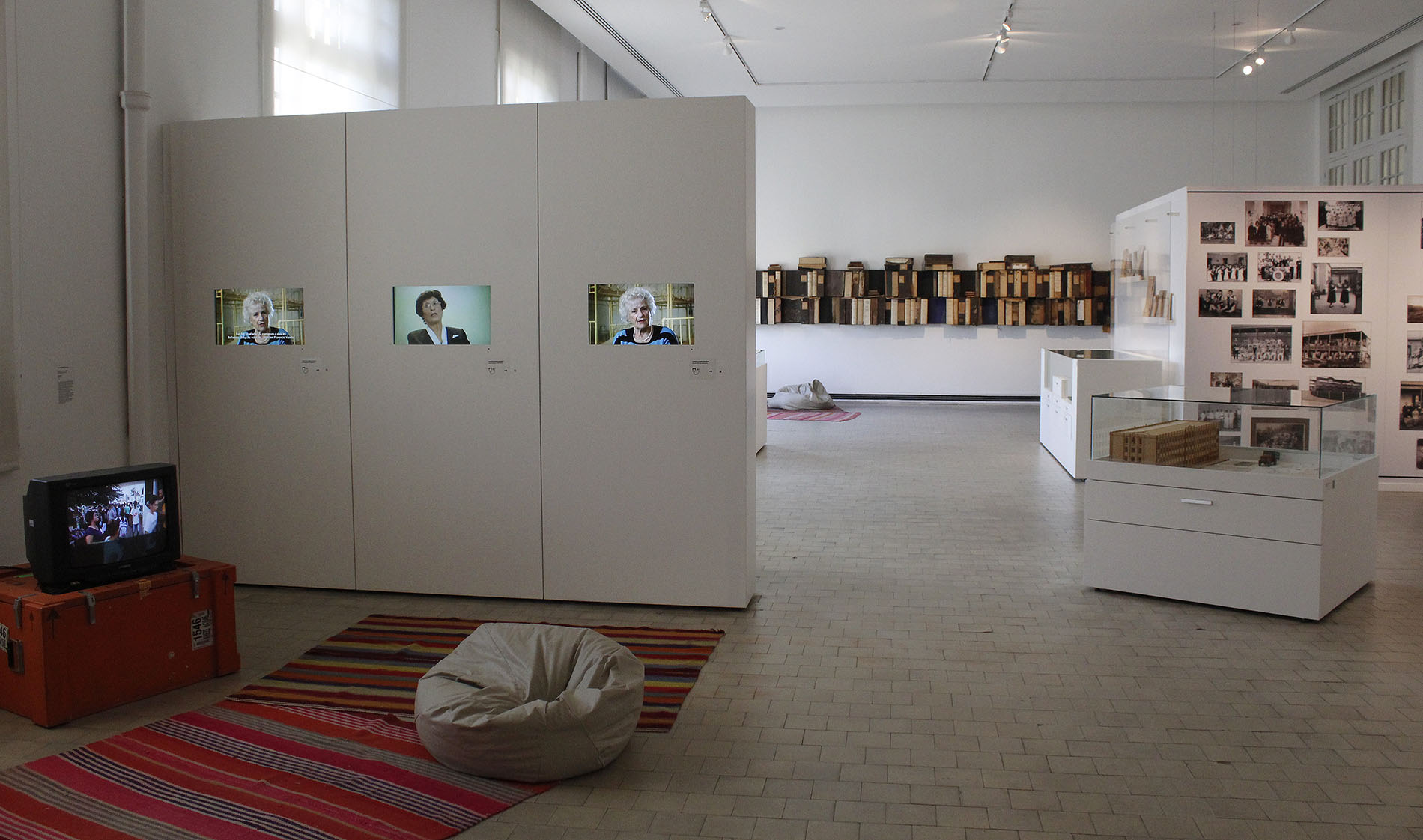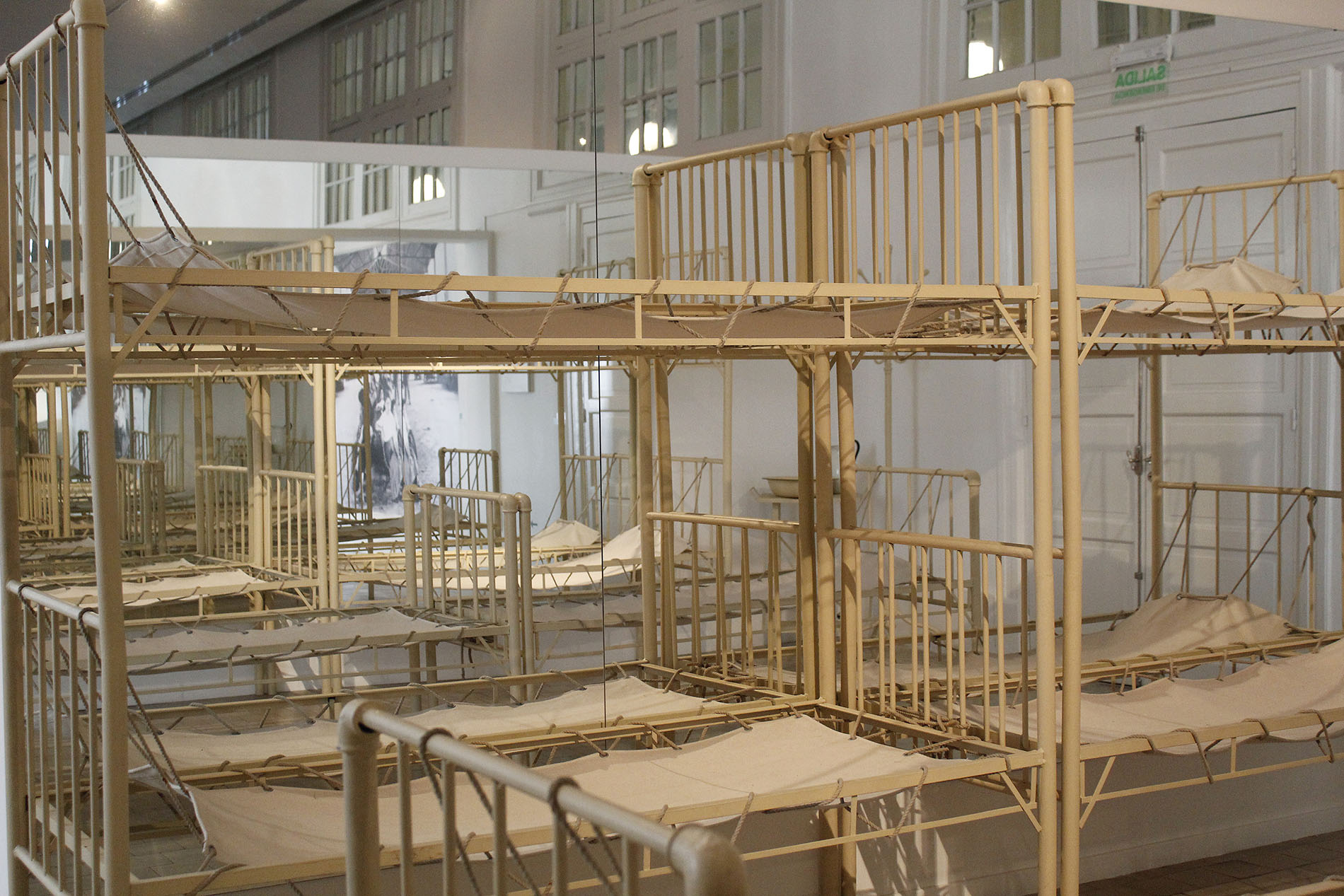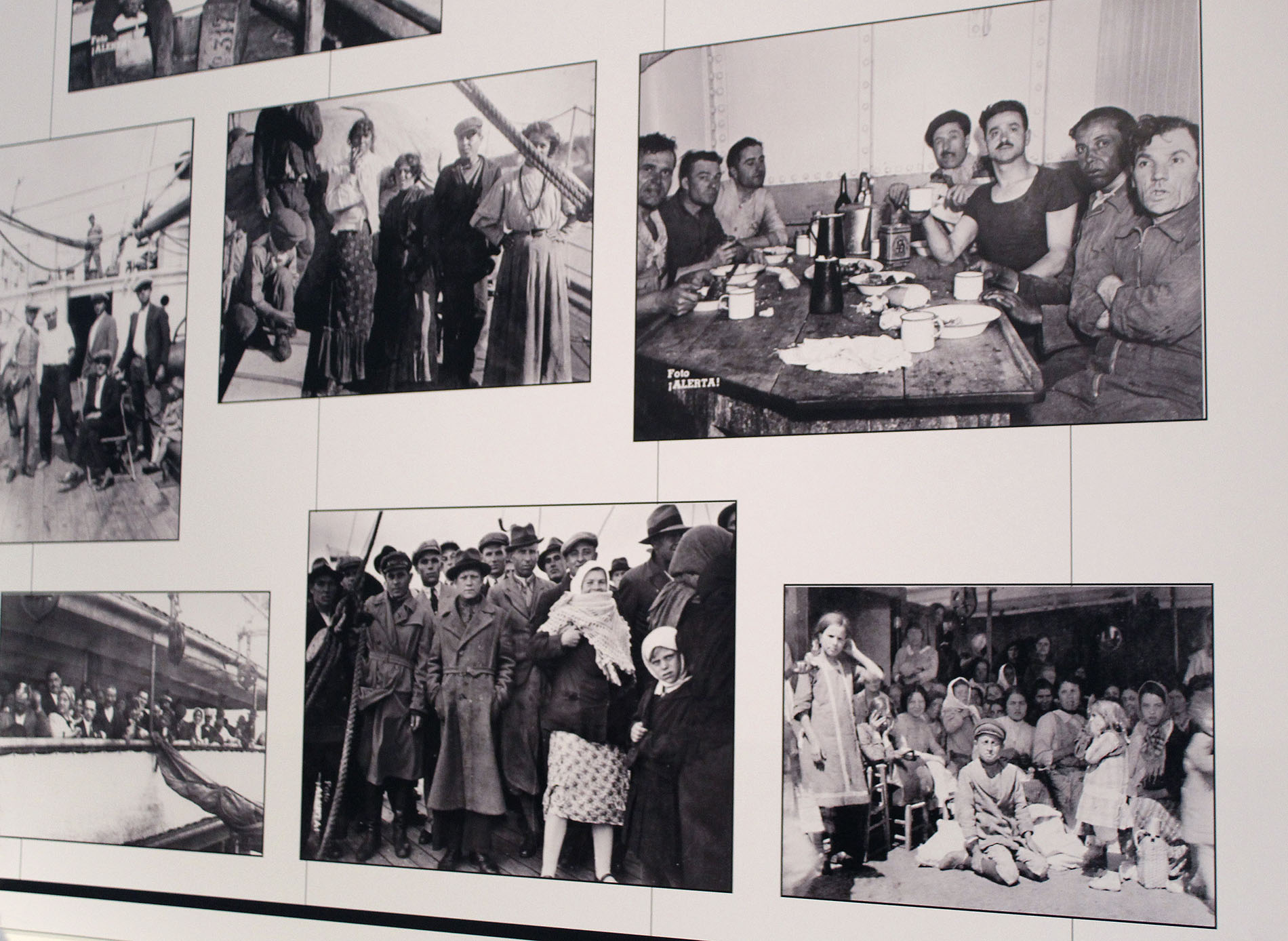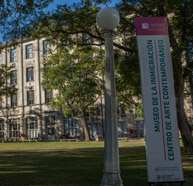-
For all people in the world


-
For all people in the world


-
For all people in the world


-
Presentation
The often-mentioned concept that we Argentineans descended from ships instead of showing a millenary history of our own, was sometimes used as a demerit, when on the contrary, we should feel proud. The phrase marks a false contradiction since, although we come from different origins, we all assume the history and utopia of our America.
To claim immigration is also taking note of the capacity of our land and of us, its children, to integrate our traditions enriching ourselves.
The Argentinean Nation was formed by the desire and covenant of integration of its different regions and from that moment on it openly invited all the men of the world to come, and this was how, men and women from different places, came seeking for freedom, work and welfare that they couldn’t find in their own homelands.
Those of us who promote the Museum of Immigration are proud to be part of this Nation, heterogeneous and rich in diverse traditions. We respect the immigrants who settled down and found a homeland and at the same time we claim the native peoples who are at the base of our nationality.
The National University of Tres de Febrero thanks the National Director of Migration for the possibility of recovering and continuing this museum, which was founded in 1974, so that there is a permanent area of memory and tribute to those who came from Europe, Asia and Africa to share this soil in the beginnings, as for our South American brothers who made possible the permeability that our legislation promotes.
All our lives are a permanent journey. Those who at the time decided to drop anchor in these lands to make this Republic possible, will find in this Museum an environment of the equitable respect they deserve. We are open and we need the collaboration of all the communities.I thank Dr. Diana Wechsler and the entire team of Untref / Muntref and the National Migration Directorate for the work and goodwill that made possible the museum and this first exhibition: “for all the men of the world ….”
Aníbal Jozami
Rector UNTREF / Director MUNTREF
-
This exhibition
Each migratory process responds to different realities, motivations, legal frameworks, historical conjunctures. However, each migrant – yesterday and today – must go through a series of common moments and experiences: from the decision or need to leave their place of origin to the choice of a destination, obtaining the resources to carry out this journey, the testing of strategies and the activation of networks which can facilitate insertion for finally rooting and, with it, achieve the establishment of identity marks, which can be read as bridges between the place of origin and the place of arrival.
This exhibition, located in this emblematic building that housed in the past -and through which pass daily today- thousands of migrants, invites visitors to recreate the experience of migrating through each of the proposed stretches -travel, arrival, insertion and legacy-, activating the singular and collective memory, reviewing the past and present of a story that is written with “all the men and women who want to inhabit the Argentine soil”.
-
Sections
Travel
Since men and women, reunited in nomadic bands, moved from the heart of Africa to populate the whole world, travel became part of the practices of individuals and societies.
The history of the American continent is connected with migrations: from the early settlement over 40,000 years ago, through the process of European conquest and colonization from the fifteenth century, to the great transfer of population produced since the nineteenth and twentieth centuries until our days.
The Industrial Revolution caused changes that affected the lives of millions of people and brought with it the need of European countries to expand beyond their borders in search of sources of raw materials, markets for their industrial products and new lands for a population that was growing as never before. For example, between 1820 and 1924, 55 million people crossed the ocean between Europe and the Americas. Argentina was one of the chosen destinations.
The growth of the population in Europe was leaving the new generations of farmers without land, while America required labor for the countryside, the railways, the new factories and the services in the urban areas.
The possibility of accessing the land, best salaries and the hope of social advancement or the possibilities of living in freedom and peace were, and continue to be today, a powerful attraction to take up the challenge of finding another place in the world.
Arrival
How was it chosen to travel to Argentina? Which were the personal or family project reasons? Which were the urgencies that imposed the departure?
The reasons that mark the decision to leave the place of origin are numerous and are intertwined by different political, economic, social, cultural and personal dimensions in each historical moment.
The scholars of immigration have established some standards, ways that are repeated in different parts of the globe where there are population movements. Migratory chains, networks and patronage are one of them.
Family or friends or acquaintances, a relative or a civilian, established on the other side, who manifests the need of having a person or a group of trusted people for a job or a site where to improve living conditions, can be a network of sociability. From that moment on, the exchange of information is activated, which will culminate with the departure of those who accept the invitation. Some used the networks, others were brought by colonization companies with the hope of becoming owners of a plot of land.
Many of them stayed at the Hotel of Immigrants: they stayed until the moment when relatives or friends would look for them, or they took advantage of their stay in the Hotel to get to know something of what was waiting for them outside.In the Hotel, in addition to accommodation and food, comprehensive assistance was provided to the immigrant, which included attention to all types of health issues. Additionally, there were offices where people was advised on issues related to documentation, rights, duties and obligations, they were taught some rudiments of the national language and also some professions.
Today, this same space is still intended for migrants, both for the management of their documents as for the management of memory, here in this museum of immigration.
Insertion and legacy
To migrate activates numerous personal and collective issues. Among others, it makes each man or woman a “newcomer”, an “another”, someone different who has to learn, perhaps, a new language, adapt to other social and cultural practices, acquire another job, other habits, along the path that will take him to finally integrate in the chosen place. This, in turn, will be modified in some way also by the flow of groups that, from different origins, are mixed together.
Accordingly, the different immigration currents significantly shape the formation of the population and culture of our country. Buenos Aires stands as a receiving center and from here many go inside the country in search of work and progress possibilities. The insertion, however, is not without tensions.For example, in the case of historical immigration, the European origin did not exempt them from derogatory words; “Galicians” and “Tanos” as, on the other hand, “Turks” (as an agglutinant of Arab populations) and “Russians” (euphemism for the Jewish population) are described generically as ignorant and uneducated, among other adjectives. Although for the leading sectors European immigration was going to improve the country with its work and culture, the introduction of anarchist and socialist ideologies and the practices of union struggle made xenophobic attitudes emerge creating the figure of “evil” and “good” immigrant according to the terms used by the reactionary and anti-popular sectors in our country.
In the meantime, the immigrants meant to preserve their home countries’ identity and traditions. So they built solidarity networks based on their communities of origin. They created mutual-aid associations, cultural centers, community associations, clubs, schools, hospitals, and so on. By means of access to free public education, mandatory military service and the Sáenz Peña law regarding political participation, the sons and daughters of those immigrants completed integration.
In the present moment, the influx of people from neighboring countries as well as the sustained presence of people from Europe, the Middle East, Asia and Africa enrich the diversity present in our country. This museum aims to give an account of this diversity.
Venue
Museum of Immigration







